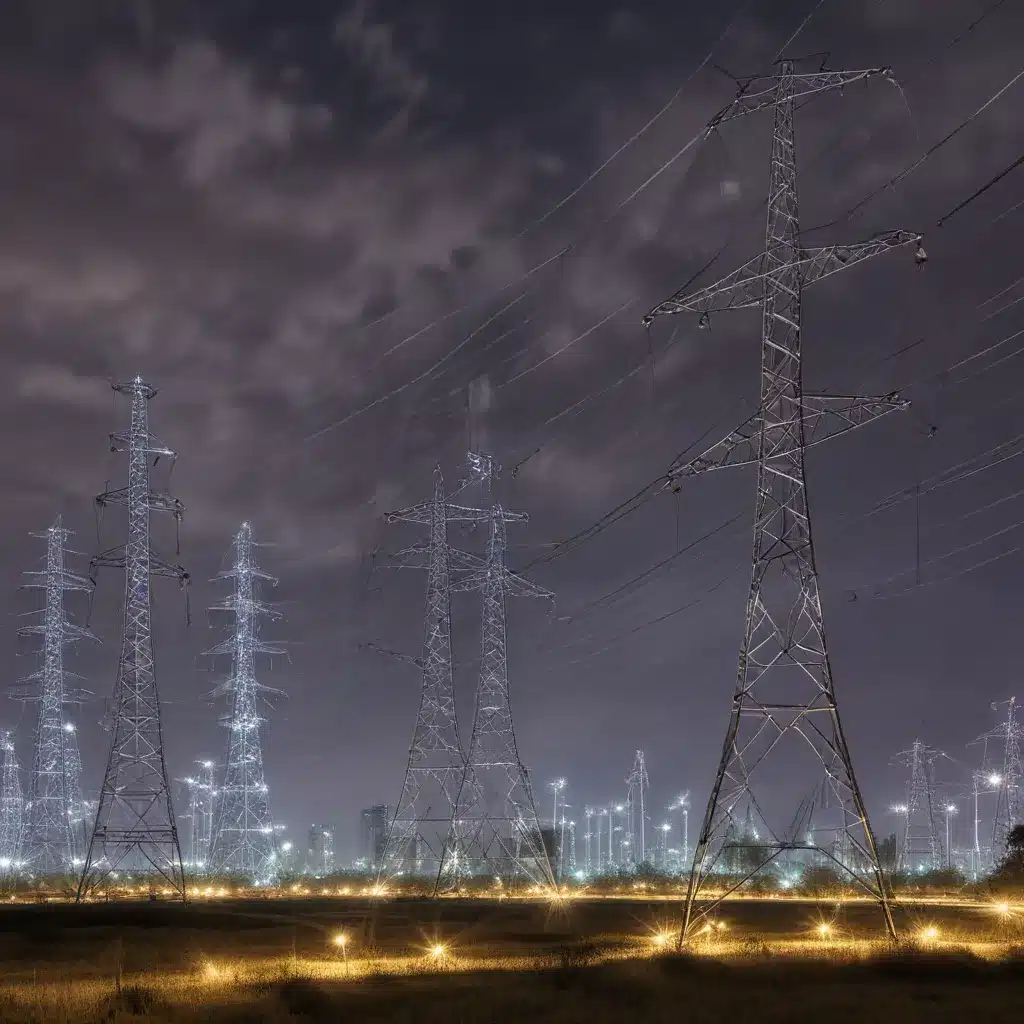
As the energy landscape in Europe undergoes a transformative shift towards renewable sources, the role of smart grids and predictive analytics has become paramount. These advanced technologies are revolutionizing the way we manage, distribute, and consume electrical power, paving the way for a more efficient, reliable, and sustainable energy future.
Energy Efficiency Optimization
At the heart of smart grid innovations are predictive models and data analytics that enable grid operators to optimize energy efficiency across the entire system. One of the key applications is load forecasting, where AI-powered algorithms analyze historical consumption patterns, weather data, and real-time usage to predict short-term and long-term energy demands. This allows utilities to better align generation capacity with expected needs, minimizing wasteful over-generation and costly energy imports.
Complementing load forecasting, demand response strategies leverage predictive insights to incentivize consumers to shift their energy usage during peak periods. By analyzing factors such as time-of-use pricing, appliance-level consumption, and grid conditions, smart grids can dynamically adjust rates and dispatch targeted notifications to encourage load-shifting. This helps to shave demand spikes, reduce the need for peaker plants, and integrate more renewable energy sources onto the grid.
The integration of distributed renewable energy generation, such as rooftop solar and community wind farms, presents another significant challenge for grid operators. Predictive analytics play a crucial role in managing the inherent variability of these resources. By forecasting solar irradiation, wind speeds, and other environmental factors, smart grids can anticipate fluctuations in renewable energy production and coordinate the dispatch of flexible generation assets or energy storage to maintain a stable and reliable power supply.
Grid Reliability Enhancement
Ensuring the resilience and reliability of the electrical grid is another area where predictive analytics shine. Outage prediction models leverage sensor data, weather forecasts, and historical failure patterns to identify potential disruptions before they occur. This enables proactive maintenance, strategic asset deployment, and automated grid reconfiguration to minimize the impact of outages and keep the lights on for consumers.
Beyond outage prevention, predictive analytics are revolutionizing asset management across the grid infrastructure. By continuously monitoring the condition of transformers, substations, and transmission lines, smart grids can detect early signs of degradation and plan for timely maintenance or replacement. This not only extends the lifespan of critical equipment but also reduces the risk of catastrophic failures that could lead to widespread blackouts.
Predictive insights also play a crucial role in enhancing grid resilience to extreme weather events, which are becoming more frequent and severe due to climate change. By integrating weather forecasting models and historical data on storm patterns, smart grids can anticipate the impact of hurricanes, wildfires, or polar vortexes, and proactively harden the grid, reroute power flows, and mobilize emergency response teams to minimize disruptions and restore service quickly.
Data-Driven Grid Modernization
At the core of smart grid predictive analytics are the vast amounts of data collected from a network of sensors and smart meters deployed throughout the electricity distribution system. These devices continuously gather real-time information on voltage levels, current flows, transformer temperatures, and other critical parameters, enabling grid operators to monitor the health and performance of the grid in granular detail.
Advanced analytics techniques, such as anomaly detection and asset condition monitoring, harness this sensor data to identify potential issues before they escalate. By detecting patterns that deviate from normal operation, smart grids can trigger preventive maintenance, adjust grid configurations, or activate backup systems to ensure uninterrupted power delivery.
The integration of machine learning and artificial intelligence has further amplified the capabilities of smart grid predictive analytics. These cutting-edge technologies enable predictive maintenance models that can forecast equipment failures, optimize maintenance schedules, and reduce costly unplanned outages. Moreover, AI-driven automated grid control systems can make real-time adjustments to voltage, frequency, and power flows, ensuring the grid operates within optimal parameters and adapts to changing conditions.
Grid Optimization through Predictive Insights
As Europe continues its pursuit of ambitious climate goals, the integration of renewable energy sources has become a top priority. Predictive analytics play a crucial role in managing the intermittency and variability inherent to wind and solar power generation. By forecasting renewable energy output based on weather patterns, smart grids can coordinate the dispatch of flexible generation assets, such as natural gas plants or hydroelectric facilities, to maintain a stable and reliable power supply.
Complementing renewable energy integration, energy storage optimization is another area where predictive analytics shine. By analyzing demand profiles, energy prices, and storage system capabilities, smart grids can determine the optimal times to charge and discharge batteries, flywheels, or other storage technologies. This enables peak shaving to reduce the need for expensive peaker plants and frequency regulation to maintain grid stability, ultimately enhancing the overall efficiency and sustainability of the energy system.
Towards a Smarter, Greener Energy Future
As the European Union continues its journey towards a low-carbon economy, the synergy between smart grids and predictive analytics holds immense promise. By optimizing energy efficiency, enhancing grid reliability, and facilitating the integration of renewable resources, these technologies are paving the way for a more sustainable, resilient, and future-ready energy system.
Across the continent, leading utilities, policymakers, and technology innovators are collaborating to unlock the full potential of smart grid predictive analytics, working towards the shared vision of a greener, more reliable, and more intelligent energy landscape. As we navigate the complexities of the energy transition, these data-driven innovations will undoupin the European Future Energy Forum’s mission to power a sustainable tomorrow.







